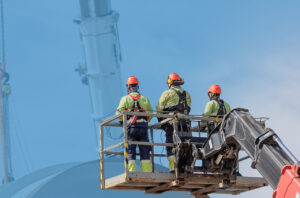On October 27th 2025, the Social Housing (Prescribed Requirements) (England) Regulations 2025 placed duties on providers of social housing to investigate and address emergency hazards and all damp and mould hazards that present a significant risk of harm to tenants within fixed timeframes.
What counts as social housing?
Social housing includes accommodation made available for rent below the market rate in line with rules designed to ensure that it is made available to people whose needs are not adequately served by the commercial housing market. Typically this includes housing made available by local authorities, housing associations and other private registered providers of social housing.
Key landlord duties
Among other requirements, under the new rules landlords must:
- Investigate potential emergency hazards within 24 hours of becoming aware of the hazard.
- Carry out relevant safety work within 24 hours of becoming aware of the emergency hazard.
- Investigate potential significant hazards within 10 working days of becoming aware of them
- Produce a written summary of investigation findings and provide this to the tenant within 3 working days of the conclusion of the investigation.
- Undertake relevant safety work within 5 working days of the investigation concluding, if the investigation identifies a significant hazard.
Updated Government guidance
To support the new regulations, the government has also recently updated guidance covering matters such as:
- Investigating hazards
- The requirement to take emergency action
- Making property safe and carrying out supplementary preventative works
- Securing suitable alternative accommodation.
While the guidance is primarily aimed at social housing landlords, it will also be relevant for those who provide property maintenance services in this sector.
The new regulation is also known as Awaab’s law in memory of a 2-year-old who died from a respiratory condition following exposure to mould at home.
It is understood that in 2026 the Government intends to expand the regulations to include hazards from:
- excess cold and excess heat
- falls associated with baths, etc., on level surfaces, on stairs and between levels
- structural collapse and explosions
- fire and electrical hazards
- domestic and personal hygiene and food safety where they present a significant risk of harm.
If you have any questions or would like support with managing issues at your workplace, please speak to your usual contact or get in touch using the form below.

New rules for providers of social housing in England

Small but mighty – working safely with nanomaterials

Do you have a MEWP rescue plan?

Changing the asbestos control regime

HSE Launch Motor Vehicle Paint Spraying Campaign
